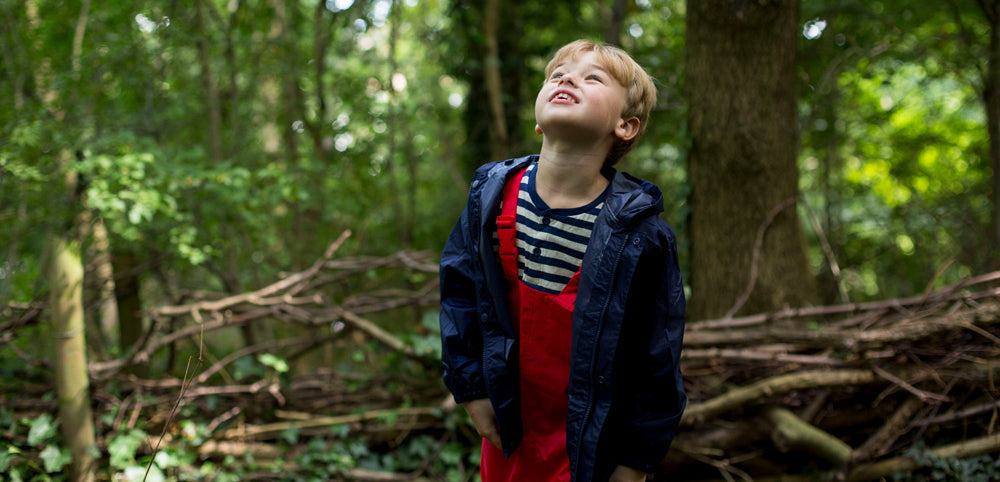
Top 10 Trees To Spot on Your Summer Walks
Did you know that there are over 50 species of native trees in the UK? If you want to make a family walk more exciting, why not head outside and play tree detectives with your little explorers and see how many different trees you can hunt down?
We do not always pay attention to the trees that surround us - have a look at our handy tree guide that will help you identify the most common trees that you may come across on your summer walks. How many different trees have you already spotted this year?

How to identify trees:
- Leaves – have a look at the leaves or needles and their shape and colour. Leaves are the most distinctive feature that will help you tell one tree from another. Trees with thin, flat leaves are called broadleaf and shred their leaves annually. Trees with scales or needles are called conifers and most are evergreen
- Twigs, leaf buds and bark – use these in winter when leafy trees lose their leaves. What colour is the bark? Does it have a pattern? Is it smooth or bumpy? Are the twigs smooth or hairy?
- Flowers – trees bloom usually in the spring and their lovely flowers can be used for identification
- Fruits and seeds – these come in different shapes, colours and sizes and at the right time of the year will help you with identification
- Shape and silhouette – notice the height and size of the tree and look at its silhouette. Some trees have a distinctive look that will help you quickly identify them. How tall is the tree? Are its branches twisted? How does the crown look like?
- Area – trees grow in different places. Some are likely to grow close to water (e.g. along river banks), others in parks or woodlands
You can also download a tree identification app and test it outside. You will be able to identify the most common trees in just a few steps.
Here are the most common trees in the UK and everything you need to know to be able to identify them:

Photo credit: Henry Schneider on Unsplash
1) Horse chestnut (Aesculus hippocastanum)
Loved by little ones, these tall, beautiful trees can live up to 300 years and were introduced from the Balkans in 1616.
How to spot: the leaves appear in early spring and look a bit like giant, green hands with 5-7 fingers. White and pink flowers appear in May. In autumn look out for brown, glossy conkers surrounded by a green, spiky case.
Where to find: parks and woodlands
2) Common alder (Alnus glutinosa)
Alders love wet, muddy areas. When submerged in water, they do not rot but solidify and become even stronger!
How to spot: search for small brown cones (female catkins) and dark green, racquet-shaped leaves (the tips are never pointed).
Where to find: cool, watery areas such as streams, wet woodlands or river banks.
3) Silver birch (Betula pendula)
This elegant, native tree with its characteristic silver-white bark can reach 30m in height and is loved by gardeners who want to purify their land. Silver birch is wind and frost-resistant and is tolerant to pollution and a wide range of temperatures.
How to spot: look out for white bark and small, green, triangular-shaped leaves
Where to find: mixed woodlands.
4) Elder (Sambucus nigra)
With its fragrant, creamy-coloured flowers and dark fruits, elder is the essence of summer. The crowns of elderflower can be turned into cordials and wines or mixed into cakes or jams.
How to spot: from April to June, look out for small, white, sweet-smelling flowers that attract lots of insects. From late summer to autumn, search for small, black fruits. Leaves have 5-7 pairs of toothed leaflets and smell unpleasant when touched.
Where to find: hedgerows, woodlands, gardens.

Photo Credit: Azimbek Assarov on Unsplash
5) English oak (Quercus robur)
This large, deciduous tree grows up to 20-40 metres tall (and shorten with age) and can live for a millennium. English oaks are home to over 280 species of insects and birds.
How to spot: look out for round-lobed leaves, yellow hanging catkins (in spring) and green acorns that turn brown as they ripe.
Where to find: parks and woodlands.
6) Hawthorn (Crataegus monogyna)
Blooming hawthorns and their lovely, yellow, or pale pink flowers are one of the signs of spring.
How to spot: Scented, white, or pale pink flowers with five petals in spring. Lobed leaves that turn yellow before falling in autumn and deep-red fruits.
Where to find: ancient woodlands in central and southern England.
7) Field maple (Acer campestre)
The UK’s only native maple tree, the field maple fights pollution and is famous for its stunning autumn colours.
How to spot: look out for small, dark green, shiny leaves that turn gold in autumn and large, winged fruits.
Where to find: gardens, parks, woods, hedgerows, and on chalk lowland.
8) London plane (Platanus x hispanica)
Born from the American sycamore and the Oriental plane, London plane is the capital’s most common tree
How to spot: green, spiky fruits and multi-coloured bark
Where to find: usually planted as a street tree in larger cities, particularly in London.

9) Sycamore (Acer pseudoplatanus)
These tall, broadleaf trees live for 400 years and can grow to 35 metres. Their flowers are a great source of pollen and nectar for bees and other insects.
How to spot: look out for five-lobed leaves with toothed margins and red stalks. Flowers are green and small and hang in spikes. They turn into distinctive winged fruits known as samaras.
Where to find: parklands, hedgerows and woodlands.
10) Bird cherry (Prunus padus)
Famous for its almond-scented blossom, the bird cherry is a native tree related to the wild cherry. Its fruits are eaten by birds, badgers and small mammals.
How to spot: in spring, look out for creamy white or pale pink flowers – they develop into reddish-black, bitter cherries in late summer. Their bark is smooth and greyish-brown and emits an acrid odour. In spring, the flowers are creamy white or pale pink. The oval, hairless leaves have pointed tips.
Where to find: wet woodland, hedgerows, stream and river banks.
Happy tree spotting!




















